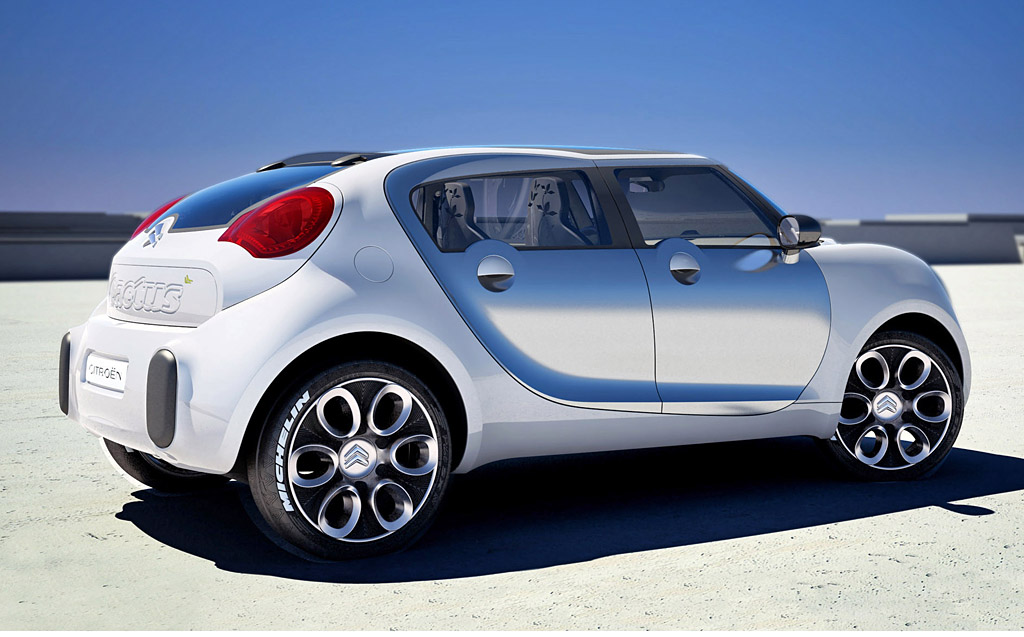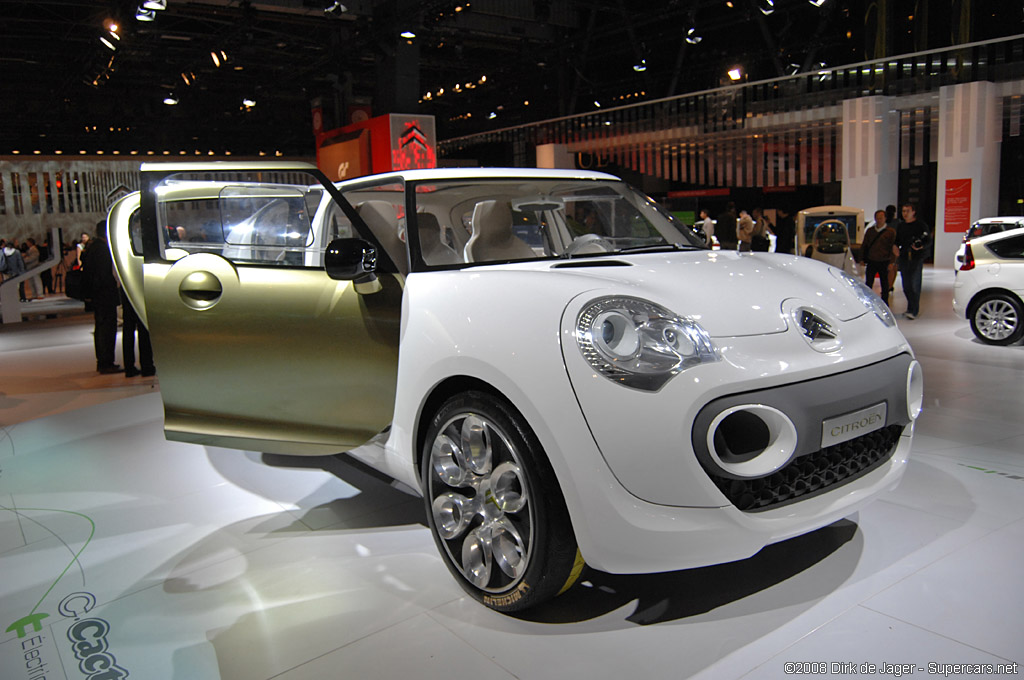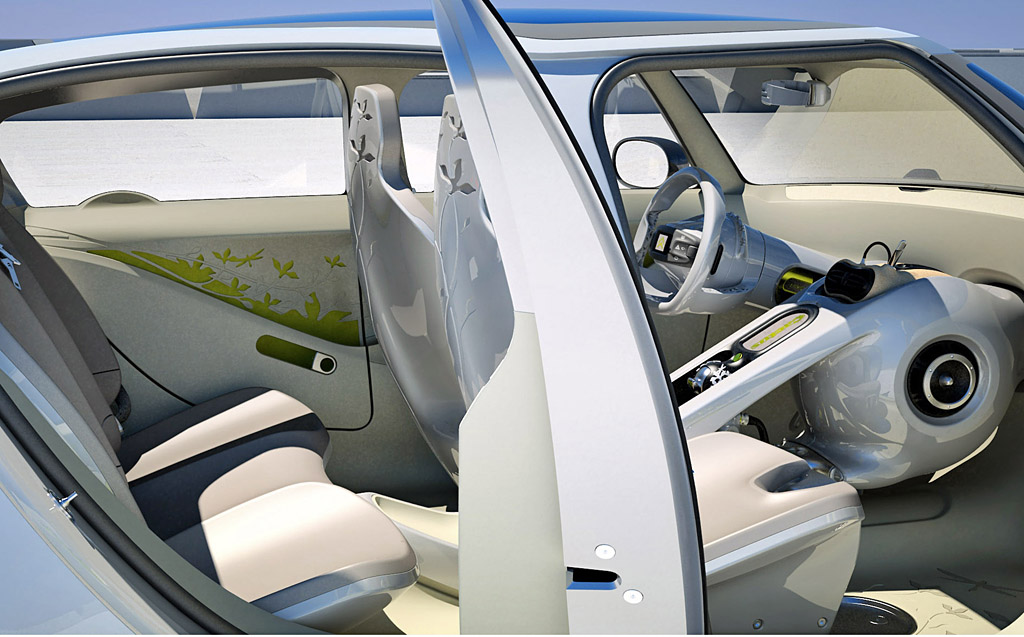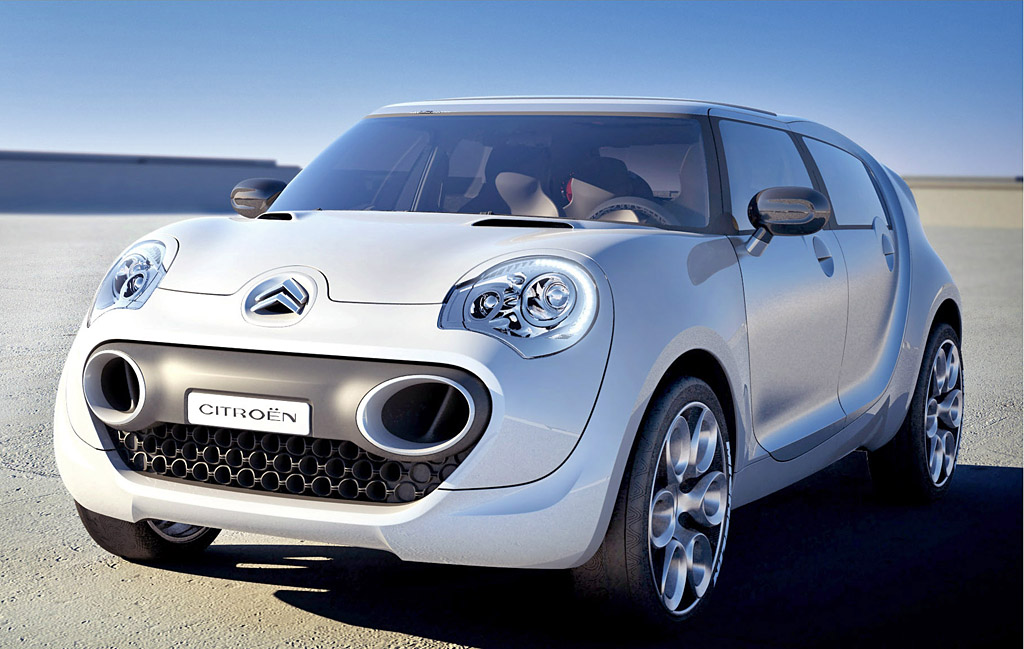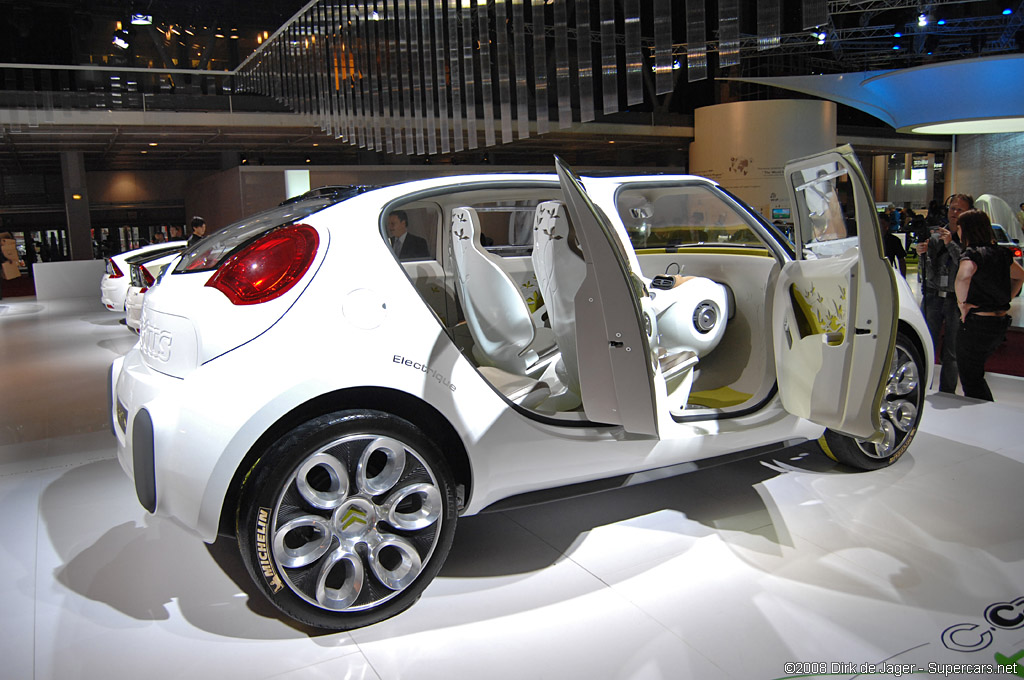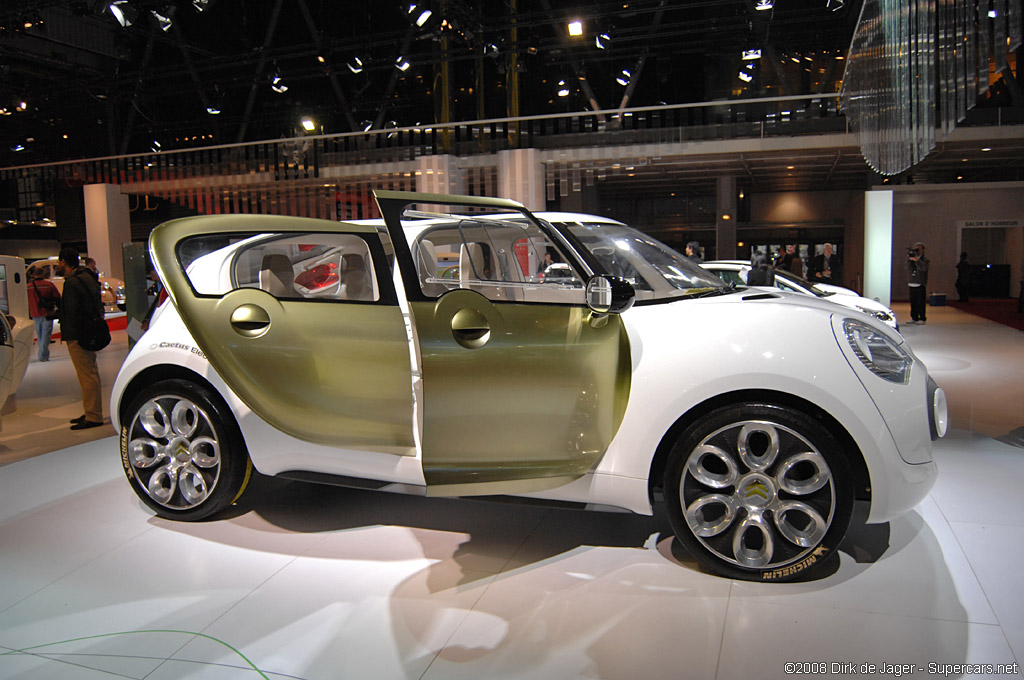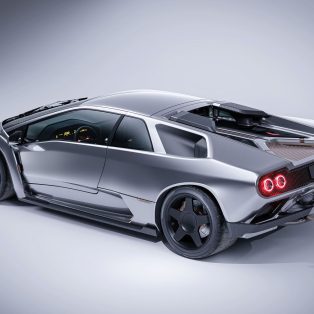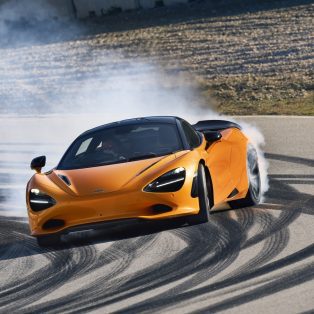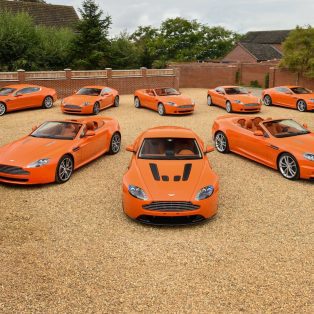2007 Citroën C-Cactus Concept
03 September 2007 – Making its world debut at Frankfurt, the C-Cactus is an imaginative and ingenious eco-friendly concept car brimming with clever thinking and dramatic design, which demonstrates how an extremely environmentally-sensitive design is feasible for a similar price to a conventional car.
The truly innovative C-Cactus is built on the Citroen C4 platform, yet uses only around half the components of a conventional car and incorporates many recycled components. It offers fuel economy of 83mpg, CO2 emissions of just 78g/km and even a ZEV (Zero Emission Vehicle) mode whilst maximum speed is deliberately capped at 93mph.
Fitted with an ultra-clean Diesel Particulate Filter System, this ultra-efficient hybrid HDi drivetrain combines a 70bhp HDi diesel engine with an electric motor that provides an additional 30bhp of power. For urban driving, the ZEV mode provides silent, all-electric operation, and for journeys requiring successive acceleration and deceleration, the hybrid system limits fuel consumption by using both types of energy.
A fresh look at design helps to keep production costs down meaning that the diesel hybrid car could be sold for a similar cost as a conventional car. Citroen engineers focused on an original approach that sets the C-Cactus apart from its peers.To do this, they streamlined the number of parts and mechanisms required, incorporated several functions into a single part and removed all features that are non-essential to the running of the car or to the comfort and safety of the occupants.
This is clearly illustrated by the cabin, which consists of just over 200 parts, only around half that of a similarly-sized conventional car. One of the first moves involved the removal of the dashboard, with the original functions and loudspeakers, gearbox controls and navigation system now grouped on the central console and Citroen’s signature fixed centre controls steering wheel. The ignition key is also an MP3 player.
C-Cactus has a unique personality and style yet the focus was very much on simplicity. The front bumper section, which includes the headlamps and trademark Citroen chevrons, also makes up the lower part of the rear tailgate. The design of the car’s front end consists of just two parts: the fixed bonnet comprising the front wings and a flap giving access to the vehicle maintenance functions.
The door panels are made of just two parts, compared to 12 in a conventional car, and because the automatic air conditioning system virtually makes it unnecessary to open the windows, Citroen’s engineers have removed the opening mechanisms and replaced them with simple sliding panes.
The spacious and light cabin, with its panoramic glass sunroof and large windscreen, is optimised by the simplicity and effectiveness of the interior design. The front seats comprise just two parts: a comfortable, moulded, integral-skin foam part for the seat and a solid monoblock frame to hold the former in place and fix it to the floor rails.
Maximising the car’s green credentials, the C-Cactus uses a significant number of recycled or recyclable materials. The windscreen, windows and tyres are all recyclable, as are the steel door panels, that are unpainted but which have been treated for corrosion. The interior materials also reflect the innovative ecological direction of the C-Cactus’ design. Environmentally-friendly cork and felt are used for many parts and the patterned floor uses recycled leather taken from off-cuts.
The 21? wheels are another standout feature of the C-Cactus’ design, adding to the contemporary look of the car. Developed in conjunction with Michelin, the large-diameter and low-profile tyres help to reduce ground friction area, boost fuel efficiency and keep production costs down.
The stylish decor that is featured throughout the cabin, symbolising nature and the environment, has often been created by removing material. For example, the patterns cut out from the door panels show the felt inserted between the panel and the metal. Another ingenious design feature is a clip-on bag replacing the passenger side glovebox, saving space in the cabin.
The C-Cactus also boasts impressive levels of equipment. The touch screen on the central console includes the navigation system and onboard computer, while two high-quality loudspeakers are built into the central console, minimising wiring and installation costs.
With similar dimensions to those of a family car, at 4.2m long and 1.8m wide, Citroen’s C-Cactus has a generous-sized boot, offering up to 1,000 litres of load space. The rear seats can slide up against the front seats while the floor pan, which is integral with the rear bench, slides forward to reveal a sub-floor that provides an almost flat surface for loading bulky objects.





